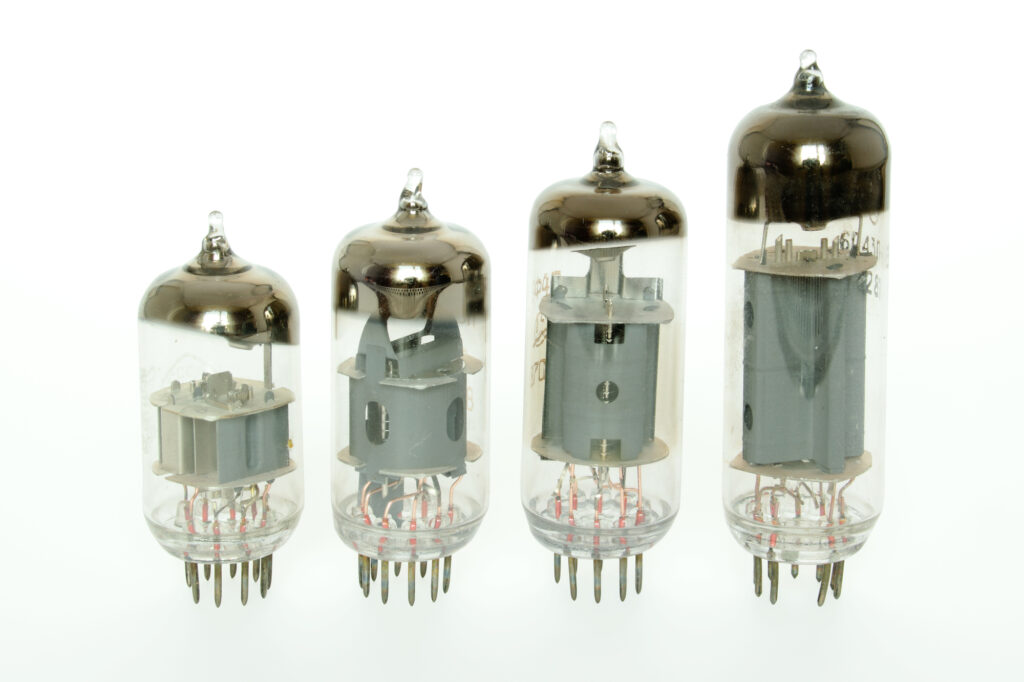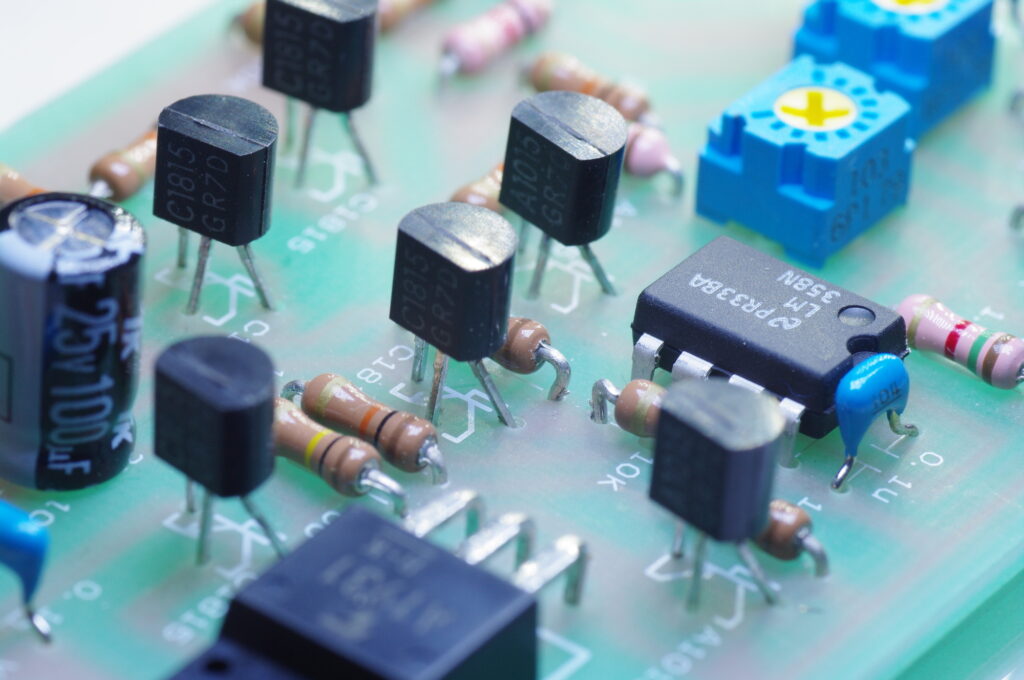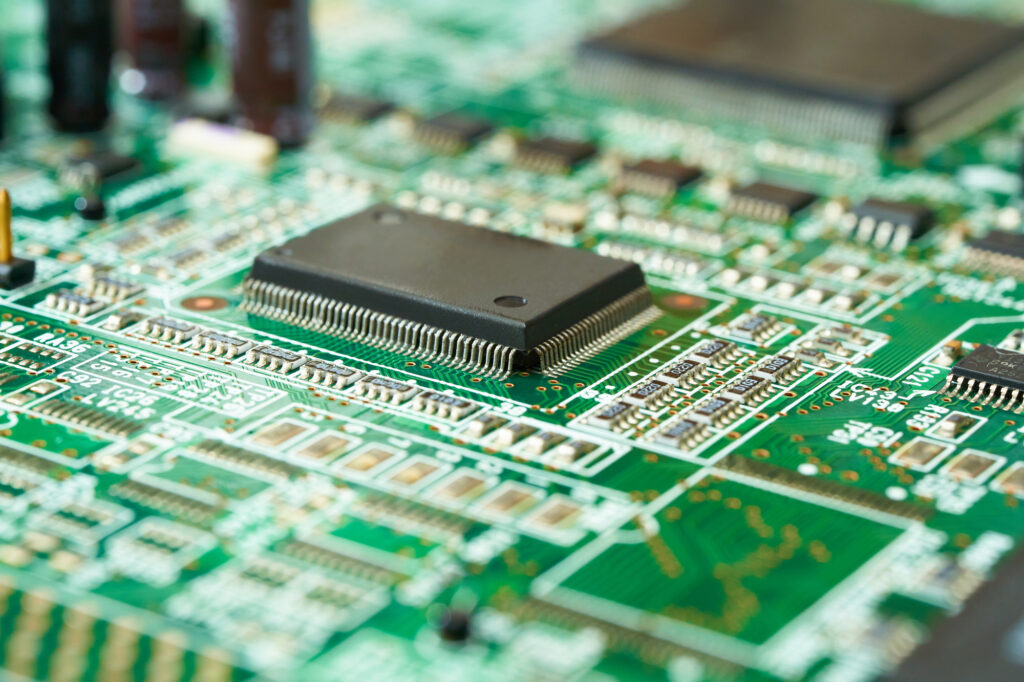The history and evolution of semiconductors
Introduction to the Japanese semiconductor industry and outlook
Semiconductors first emerged in the 20th century. They are now integral to nearly every electronic device around us, from IT devices like computers and smartphones to everyday home appliances, playing vital roles in our daily lives. In this article, we will explore the history of semiconductors, from their birth through their widespread adoption, their current state, and their outlook.
Table of contents [close]
- 1. The invention and adoption of semiconductors
- 2. History of the Japanese semiconductor industry
- 2.1. Rapid growth of the Japanese semiconductor industry
- 2.2. US-Japan Semiconductor Agreement and challenges in the industry
- 2.3. Japanese competitive edge in semiconductor technologies
- 3. Rapid growth of semiconductor use
- 3.1. Semiconductor use today
- 3.2. Outlook for semiconductors
- 4. Summary | Ever-evolving semiconductor technologies
The invention and adoption of semiconductors
The first semiconductor elements were invented roughly 70 years ago. Since then, semiconductors have undergone rapid development. This section will describe the development and progress of semiconductors, tracing their evolution from the period before their invention to today.
The era of vacuum tubes

In 1904, John Ambrose Fleming invented the "diode vacuum tube" by exploiting the Edison effect. This innovation enabled the rectification of electrical flow and allowed for stable detection of radio waves.
Following this, various vacuum tubes, such as triodes with amplification capabilities, were developed. They were used in telephones, radios, early computers, and many other devices, sparking the emergence of many new technologies and products.
However, vacuum tubes had several limitations. Their filmaments generated heat, which needed to be dissipated. This made miniaturization challenging because of the space required for cooling, as well as the inherent size of the tubes. Additional drawbacks included high power consumption and a limited operational lifespan of only a few thousand hours.
The development of transistors

A transistor is one of the fundamental semiconductor components with amplifying capabilities, used in all electronics. A point contact transistor was demonstrated by Bardeen and Brattain in late 1947. A short time later, in 1948, Shockley introduced the improved bipolar junction transistor, marking the beginning of the gradual replacement of vacuum tubes with semiconductors.
Transistors are much smaller than vacuum tubes. This has allowed electronic devices to become much smaler in size, paving the way for innovations such as portable radios. This development also triggered a significant leap forward in computer technology.
The impact of the transistor on the world was profound, earning Bardeen, Brattain, and Shockley the Nobel Prize in Physics in 1956 for their groundbreaking work in its development.
The development and evolution of integrated circuits

In 1958-1959, Kilby and Noyce separately developed the integrated circuit (IC), which combined multiple semiconductor elements into a single component. An IC integrates transistors and various other electronic components onto a single silicon substrate, allowing for more complex functionalities.
While the development of transistors enabled the miniaturization of many electronic devices, the size of other components like wiring and capacitors posed ongoing challenges. The development of integrated circuits allowed smaller, more powerful electronic devices to be manufactured.
Integrated circuits advanced quickly, incorporating an increasing number of elements. This evolved into large-scale integrated (LSI) circuits, very large-scale integrated (VLSI) circuits, and ultra-large-scale integrated (ULSI) circuits, driving rapid progress in electronics.
History of the Japanese semiconductor industry

Semiconductor manufacturing began in Japan after World War II. It quickly grew into a major industry, paralleling the country’s rapid economic growth. In this section, we will expore the history of the semiconductor industry in Japan from the dawn of the industry to the present day.
Rapid growth of the Japanese semiconductor industry
In the 1950s, Sony secured a patent for transistor manufacturing from Western Electric, the parent company of Bell Laboratories, which held the original transistor patent. Sony produced germanium transistors and released Japan’s first transistor radio. This marked the beginning of the Japanese semiconductor industry.
During the 1960s, amid the Japanese economic miracle, numerous semiconductor manufacturers emerged in Japan. Interest in producing unique electronic devices using semiconductors grew, driving efforts to enhance technology and quality.
Demand for integrated circuits (ICs) was particularly high, especially for use in calculators, which accounted for about 50% of IC production among Japanese manufacturers. By the 1970s, Japan had established advanced semiconductor manufacturing technology for memory chips and microprocessors. This technological progress significantly boosted Japan's international competitiveness, enabling it to capture about half of the global market share.
US-Japan Semiconductor Agreement and challenges in the industry
Until the 1970s, the United States was the world’s leading producer and exporter of semiconductors. Japan surpassed the United States in semiconductor exports in 1981, a shift that was met with resistance from the U.S. and other Western countries, which were wary of Japan’s growing dominance in the global market. This led to increased pressure on Japan's semiconductor industry, including multiple dumping lawsuits.
Under the Japan-US Semiconductor Agreement, signed in 1986, the U.S. government agreed to suspend its ongoing dumping investigations in exchange for Japan's commitment to improve market access and prevent dumping. This put Japan's semiconductor industry in a challenging position, with the U.S. specifically demanding that foreign market share in Japan be increased to 20%.
In the 1990s, new players such as South Korea, Taiwan, and others entered the market, intensifying market competition and further challenging Japan’s semiconductor industry.
Japanese competitive edge in semiconductor technologies
Although Japan’s share of the global semiconductor industry has declined to about one-fifth of its peak, the country continues to lead in technologies related to semiconductor manufacturing.
Japanese companies consistently maintain a significant presence in the semiconductor manufacturing equipment market, with seven firms ranking in among the top 15 of global sales in 2023. The major Japanese makers of semiconductor manufacturing equipment have an overseas sales ratio exceeding 80%, with many foreign semiconductor companies relying on Japanese-made equipment.
In addition, Japan is the the home of many outstanding chemical and plant manufacturers that supply essential materials for semiconductor production, such as resists (photosensitive materials), various processing chemicals, and ultrapure water. These companies hold strong global market shares, further enhancing Japan's competitive edge.
Overall, Japan continues to be a key player in semiconductor manufacturing technology, demonstrating robust technological capabilities and maintaining a strong global presence.
Rapid growth of semiconductor use

Since they were first created, semiconductors have been used in a wide range of electronic devices. Their applications are expected to grow even further as the Internet of Things (IoT), which connects everyday objects to the internet, continues to spread. This trend will likely increase the demand for semiconductor devices even more in the future.
Semiconductor use today
Today, semiconductors are more important than ever, being essential components in various electronic devices, including computers, smartphones, home appliances, and automobiles. Integrated circuits that allow sophisticated processing in a compact size have been developed and widely adopted, enabling many devices to function through embedded computers.
Currently, the demand for semiconductors is rapidly increasing, but supply is constrained due to ongoing global challenges, leading to significant semiconductor shortages worldwide. This situation has highlighted the importance of securing a stable supply of semiconductors.
Outlook for semiconductors
The semiconductor fabrication process has become increasingly more sophisticated, improving the performance of ICs and allowing their size to shrink according to the process “rules” on minimum dimensions. Smaller, more powerful ICs are now embedded in a wider range of products beyond traditional information devices.
With the rise of IoT, electronic components are expected to be integrated into even more everyday items, from home appliances to furniture and even decorative objects like glasses that are not currently electronic. This trend is expected to significantly boost the demand for semiconductors.
Summary | Ever-evolving semiconductor technologies
To continue the miniaturization and performance enhancement of integrated circuits, advancements are needed not only in semiconductor components, but also in IC packaging and other related technologies. Orbray supports such technological innovation by offering the following products:
Miniaturization of semiconductor components and ICs
・Capillaries compatible with thin wires used in the wire bonding process
・Precision nozzles designed for fine processing
・Solder ball nozzles
Packaging of miniaturized semiconductor components
Orbray also provides products and technologies essential for the development of next-generation power semiconductors and high-frequency devices, including:
・Various substrates (sapphire, diamond)
・Processing technologies (polishing of GaN and AlN)


